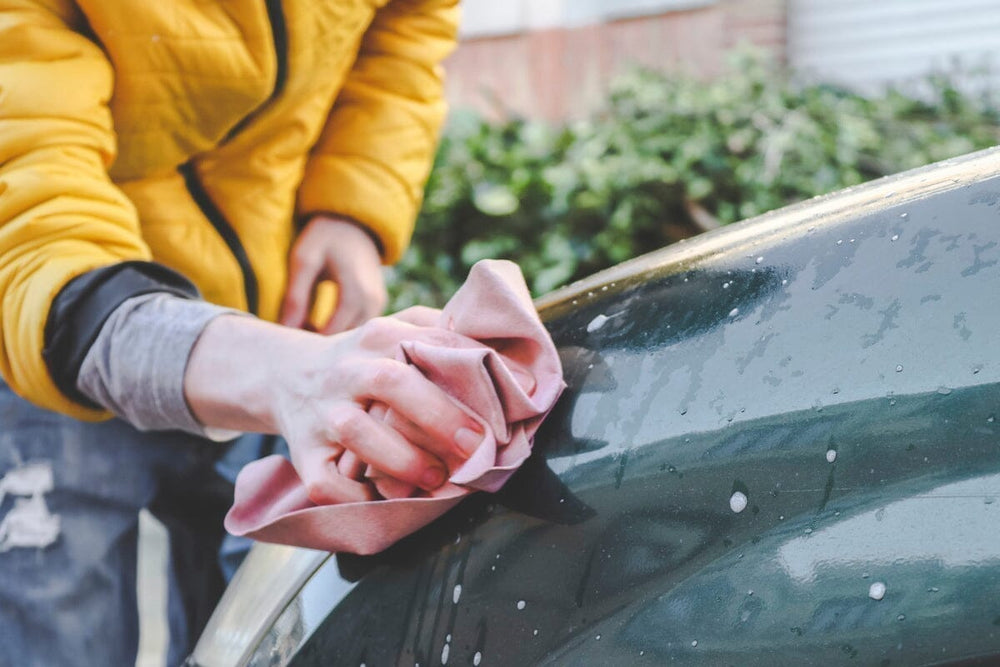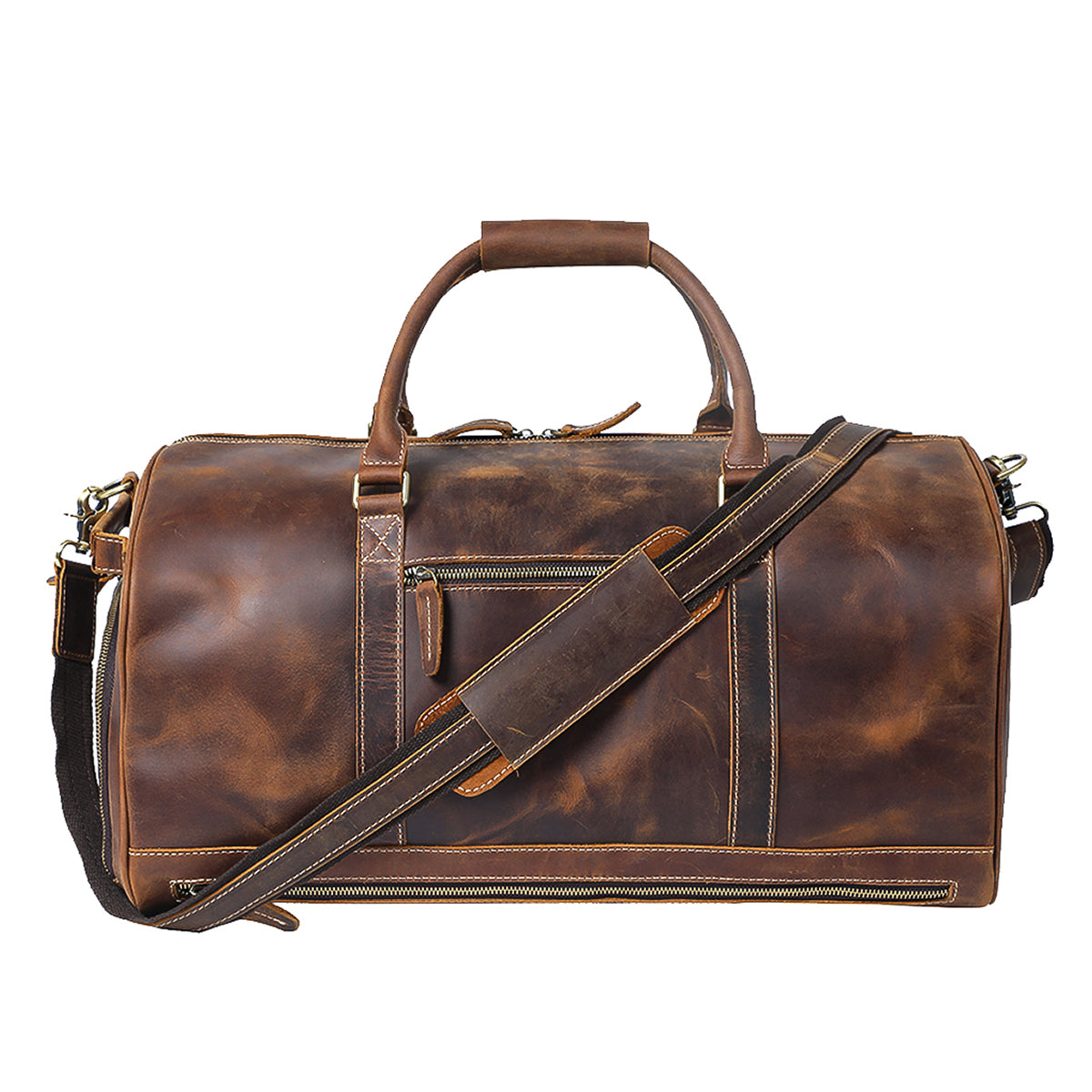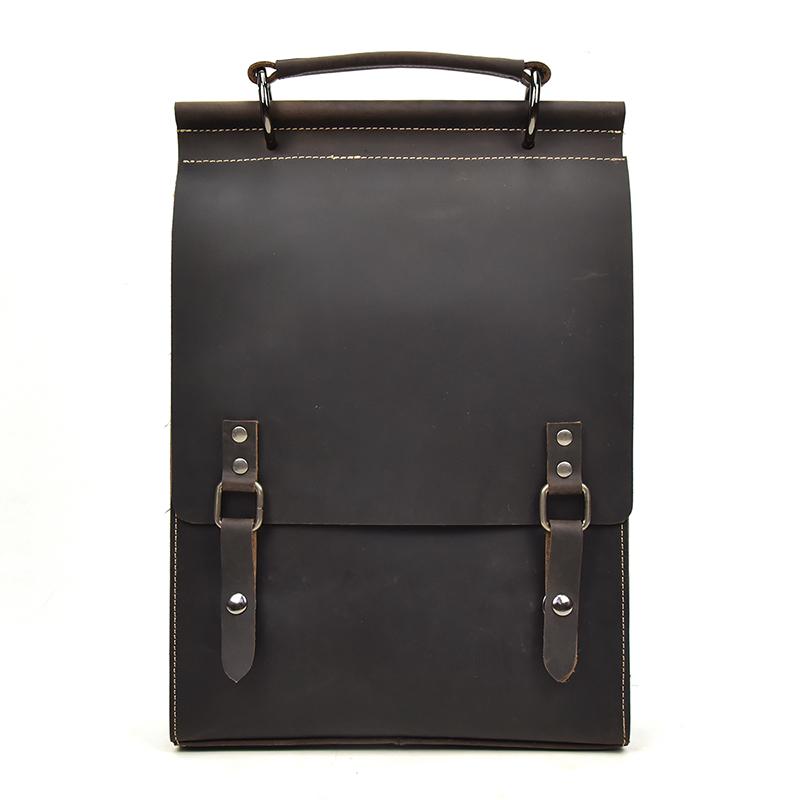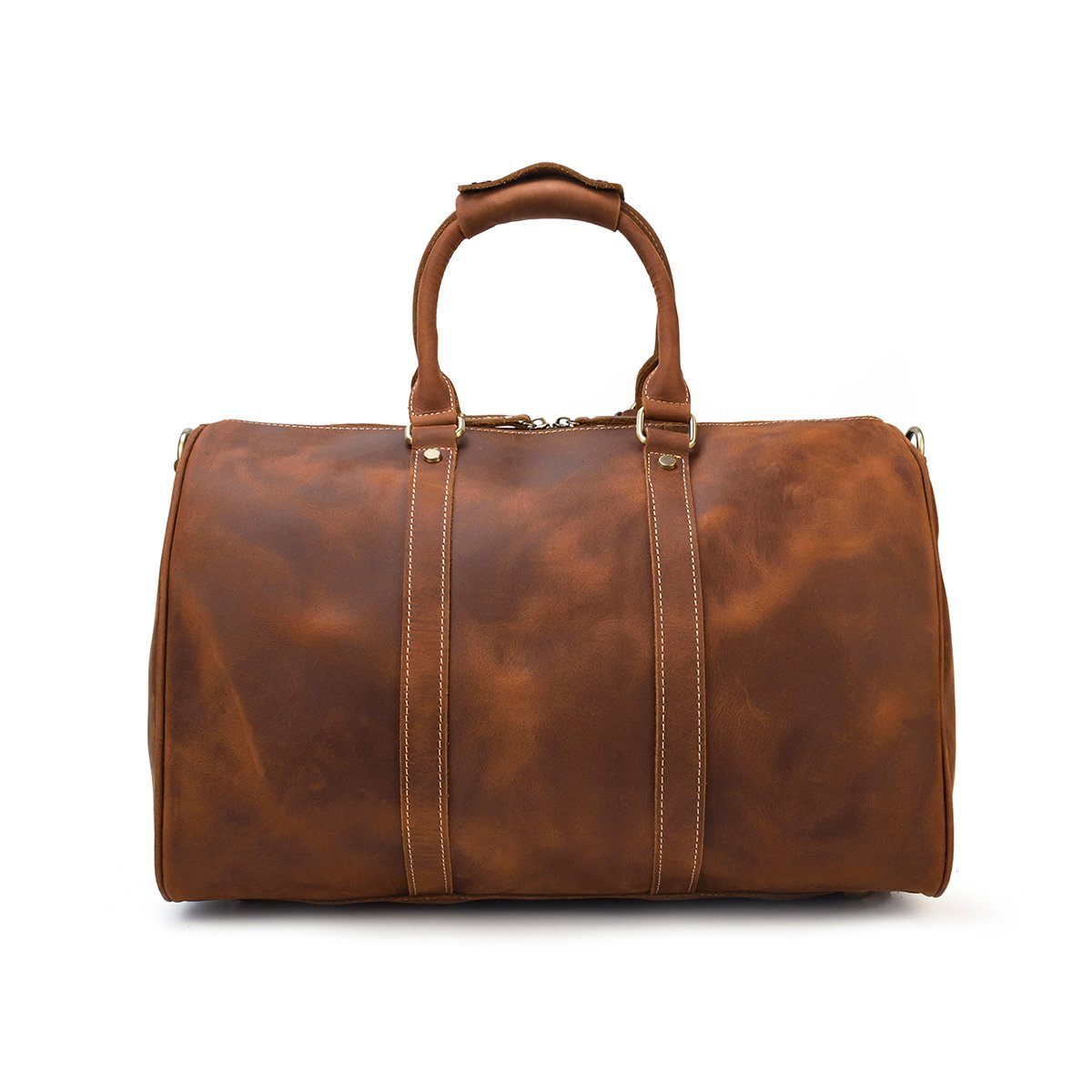
What is Chamois Leather? Demystifying This Unique Material
Reading Time: about
Hey there! Are you tired of using scratchy towels and smelly rags to dry off your car after a wash? It's time to upgrade to the ultimate drying tool: chamois leather!
But what exactly is chamois leather? It's a type of soft, porous leather that is made from the skin of a chamois, a type of goat-antelope native to the mountainous regions of Europe.
And let me tell you, this stuff is amazing. It's super absorbent (it can hold up to 30 times its weight in water!), gentle on surfaces, and durable. Plus, it comes in a range of colors to match your personal style.
But don't just take my word for it. In this comprehensive guide, we'll dive deep into the world of chamois leather. We'll cover its history, how it's made, its unique characteristics, the advantages and disadvantages compared to other types of leather, and all the ways you can use it. We'll also give you some tips on recognizing genuine chamois leather and answer some frequently asked questions. By the end of this guide, you'll be a chamois leather expert! Here is the summary:
Summary
- 1. Where Chamois Leather Comes From?
- 2. How Chamois Leather is it Made?
- 3. What are Chamois Leather Characteristics?
- 4. What are Chamois Leather Advantages and Disadvantages?
- 5. What Chamois Leather is Used For?
- 6. How to Recognize Chamois Leather?
- 7. How to Clean Chamois Leather?
- 8. What are the Alternatives to Chamois Leather?
- 9. Related FAQ
Where Chamois Leather Comes From?
Chamois leather has a long and interesting history that dates back hundreds of years. It was originally used by people in the mountainous regions of Europe, who would use the skin of the chamois goat-antelope to create durable and absorbent cloths for a variety of purposes.
One of the earliest recorded uses of chamois leather was for the production of writing tablets in ancient Rome. The soft and porous nature of the leather made it an ideal material for creating a smooth surface for writing. This leather was also used for various other purposes in ancient Rome, including for cleaning and drying off surfaces and as a protective layer for delicate objects.
In the Middle Ages, chamois leather was used for a variety of purposes, including for making bags, gloves, and other accessories. It was also used for cleaning and polishing surfaces, and it became particularly popular for use in the leatherworking industry.
Over time, it became increasingly popular and was used for everything from cleaning and drying off surfaces to buffing and polishing. It was also used to make clothing, bags, and other accessories.
In the 20th century, it began to be mass-produced using modern tanning techniques. Today, it is used all over the world for a wide range of applications, including in the automotive, marine, and home care industries. It is also often used for personal care and grooming, such as for removing makeup and as a hair accessory.
So next time you reach for a chamois cloth to dry off your car, take a moment to appreciate the long and storied history of this versatile and practical material!
How Chamois Leather is it Made?
The production of chamois leather involves several steps and requires a combination of skill, knowledge, and attention to detail to produce a high-quality product. Here is a more detailed look at the process:
-
First, the skin of the chamois is removed and soaked in a mixture of water and tanning agents. The tanning agents help to preserve the skin and make it more pliable, as well as giving it a specific color and finish. There are a few different types of tanning agents that can be used, each with its own unique properties and effects on the final leather.
-
After the skin has been soaked in the tanning solution, it is stretched and dried in the sun or by machine. This helps to create the soft, velvety texture that is characteristic of chamois leather. The specific drying method used can also affect the final properties of the leather. For example, sun-drying may result in a more natural and subtle color, while machine-drying may produce a more uniform and consistent finish.
-
After the skin is dried, it is treated with oils and waxes to give it a water-resistant finish. This helps to protect the leather and maintain its absorbent qualities. The specific oils and waxes used can also affect the final properties of the leather, such as its shine and durability.
-
Finally, the leather is cut and shaped into the desired form, whether it be a cloth, pad, or other product. The specific cutting and shaping techniques used can also affect the final properties of the leather, such as its thickness and durability.
There are a few different methods for producing chamois leather, and the specific method used can affect the final properties of the leather.
For example, some methods may result in a more absorbent or durable leather, while others may produce a softer or more pliable leather.
Additionally, different tanning agents, drying methods, oils and waxes, and cutting and shaping techniques can all be used to produce different types of chamois leather with unique characteristics.
What are Chamois Leather Characteristics?
This unique leather has a number of unique characteristics that make it an ideal material for a wide range of applications. Here is a more detailed look at some of its key properties:
Absorbency
It is extremely absorbent, capable of holding up to 30 times its weight in water. This makes it perfect for tasks such as drying off surfaces, removing excess moisture, and absorbing spills. The absorbency of chamois leather is due to its porous structure, which allows it to quickly and efficiently soak up liquids.
Softness
It is also known for its soft and velvety texture. This makes it gentle on surfaces, which is important when using it for tasks such as polishing and buffing. The softness of this leather is due to the specific tanning and drying processes used, which help to create a smooth and supple texture.
Durability
Despite its softness, it is also quite durable. It is resistant to stains and fading, and with proper care, it can last for many years. The durability of chamois leather is due to its natural properties and the protective oils and waxes applied during the production process.
Versatility
it is available in a range of colors, including classic yellow and orange, as well as more modern shades like blue and green. This allows you to choose a color that matches your personal style or the specific task you are using it for. Additionally, it can be cut and shaped into a variety of forms, making it suitable for a wide range of applications.
The unique characteristics of chamois leather make it an ideal material for a variety of tasks, from drying off surfaces to polishing and buffing. Its absorbency, softness, durability, and versatility make it a practical and versatile choice for many different applications. Depending on how it's made, you can get different types of chamois with different properties and uses. Crazy, right?
There's traditional chamois leather that's made using a natural tanning process. This results in a ultra soft, super absorbent, and totally durable leather that's great for all sorts of things. Then there's synthetic chamois leather that's made using artificial tanning agents. These are usually cheaper and easier to make, but they might not be as absorbent or durable as the real deal.
But hold on to your socks, there's more! There are also specialized types of chamois leather that are specifically designed for certain tasks or industries. Like, there are automotive chamois leathers that are super absorbent and durable, perfect for drying off cars and other vehicles. And there are marine chamois leathers that can withstand saltwater and other harsh conditions, making them great for the boating industry.
So, as you can see, there's a whole universe of chamois leather out there to discover!
What are Chamois Leather Advantages and Disadvantages?
Alright, so you're probably wondering what makes it so special. Well, it's got a ton of pros and a few cons, just like anything else. Let's break it down:
Pros
-
It's super absorbent: Like, seriously absorbent. It can hold up to 30 times its weight in water, making it perfect for drying off surfaces and removing excess moisture.
-
It's soft and gentle: it has a velvety texture that's super gentle on surfaces. This makes it great for tasks like polishing and buffing, where you don't want to damage the surface you're working on.
-
It's durable: Despite its softness, it is actually quite durable. It resists stains and fading, and with proper care, it can last for many years.
-
It's versatile: it comes in a range of colors, so you can choose one that matches your personal style or the specific task you're using it for. Plus, it can be cut and shaped into a variety of forms, making it suitable for a wide range of applications.
-
It's natural: it is made using a natural tanning process, which means it's a more sustainable and environmentally-friendly option compared to some synthetic materials.
Cons:
-
It's not the cheapest option: it can be a bit pricier than some other types of leather. But hey, you get what you pay for, right?
-
It's not vegan: If you're vegan or looking for a vegan-friendly option, it isn't for you. It's made from the skin of a chamois goat-antelope, so it's definitely not plant-based.
-
It's not as durable as some other types of leather: While it is generally quite durable, it may not be as resistant to wear and tear as some other types of leather. However, with proper care and maintenance, it can still last for many years.
What Chamois Leather is Used For?
What can you actually do with chamois leather? The possibilities are practically endless, but here are some of the most common uses:
-
Drying off cars: it is the perfect tool for drying off your car after a wash. Its super absorbent qualities make it great at soaking up excess water, and its soft texture won't scratch or damage the paint. Plus, it's a lot more effective and gentle than using a rough towel or chamois cloth.
-
Polishing and buffing: it is also great for polishing and buffing a variety of surfaces. Its soft texture and absorbency make it gentle on surfaces, so you can use it to shine up your car, boat, or even your kitchen counters. Whether you're trying to get a high gloss finish or just want to remove dirt and grime, chamois leather is a great tool to have in your arsenal.
-
Protecting delicate surfaces: Because it's so soft and gentle, it is great for protecting delicate surfaces. You can use it to wrap up your finest china or your most prized possession – your collection of Star Wars figurines. It's also great for wrapping up delicate electronics or other fragile items when you're moving or storing them.
Applications and industries:
Chamois leather has a wide range of practical uses, and it's often used in various industries such as automotive, marine, and home care. In the automotive industry, it is commonly used for tasks like drying off cars, buffing paint, and protecting surfaces from scratches and damage. In the marine industry, it's great for drying off boats and other watercraft, as well as protecting surfaces from saltwater and other harsh conditions
In the home care industry, it is also great for cleaning and dusting surfaces around the house. Its absorbent qualities make it great at picking up dirt, dust, and other messes, and its gentle texture won't damage or scratch delicate surfaces.
📷 Credit: Chemical Guys's Youtube Channel
How to Recognize Chamois Leather?
With a wide range of leather types available on the market, it is not always easy to recognize the leather you're looking for! Here are 8 tips and tricks to help you out:
-
Feel the texture: it has a unique velvety texture that's soft and smooth to the touch. If the material you're looking at feels rough or synthetic, it's probably not chamois leather.
-
Check the absorbency: it is known for its absorbency, so one way to tell if it's the real deal is to see how well it absorbs water. Simply wet a corner of the material and see how much water it sucks up. If it's chamois leather, it should be able to absorb a decent amount of water.
-
Look for the logo: Many manufacturers of chamois leather will include a logo or tag on their products. If you see a logo or tag that says "chamois leather," chances are you're looking at the real deal.
-
Ask an expert: If you're still not sure if the material you're looking at is chamois leather, you can always ask an expert. Some people who work in the leather industry will be able to tell you if it's chamois or not based on their experience and knowledge.
-
Look for a leather smell: it has a distinct leather smell that can be a giveaway. If the material you're looking at doesn't have a leather smell, it's probably not chamois.
-
Check the color: it is typically a pale yellow or cream color, although it can also come in other shades like pink or green. If the material you're looking at is a dark color or has an unnatural hue, it's probably not chamois.
-
Consider the price: While price isn't always an indicator of quality, it can be a good way to determine if you're looking at genuine chamois leather. If the price seems too good to be true, chances are the material isn't real chamois.
-
Inspect the pores: Like all leather, chamois leather has pores. These pores should be small and evenly distributed across the surface of the material. If the pores are large or unevenly spaced, it's probably not chamois.
By considering these additional factors, you should be able to get a good sense of whether the material you're looking at is genuine chamois leather.
How to Clean Chamois Leather?
Whether it's a car-drying towel, a furniture polish, or some other chamois product, you'll want to make sure you take good care of it to keep it in top condition. Here are some tips for cleaning, maintaining, and caring for your chamois leather items:
- Start by dusting or wiping away any dirt or debris from the surface of the chamois. This will help prevent any scratches or other damage when you clean it.
- Next, dampen the chamois with water. You don't want it to be too wet – just enough to get it slightly damp.
- Using a mild soap or detergent, gently scrub the chamois in circular motions to remove any dirt or grime. Be sure to rinse the chamois thoroughly afterwards to remove all soap residue.
- Once the chamois is clean, wring it out gently to remove excess water. You don't want it to be soaking wet, but it should still be slightly damp.
- Finally, hang the chamois up to air dry. Avoid drying it in direct sunlight or exposing it to high heat, as this can cause the chamois to shrink or become stiff.
In addition to cleaning your chamois, you'll want to make sure you store it properly. Avoid folding or creasing the chamois, as this can cause permanent damage. Instead, roll it up loosely or hang it up to prevent creasing.
By following these simple care tips, you can help keep your chamois leather items in great shape for years to come. Happy cleaning!
📷 Credit: Frank Gibson's Youtube Channel
What are the Alternatives to Chamois Leather?
If you like the main features of chamois leather, but it's just not quite right for you or your project, there are plenty of alternatives out there that might be a better fit. Let's take a look at some of them:
-
Synthetic materials: If you're looking for something that's similar to chamois leather but a bit cheaper or more vegan-friendly, you might want to consider a synthetic material. There are all sorts of synthetic materials out there that can mimic the absorbency and softness of chamois leather, but they might not be as durable or long-lasting.
-
Other types of leather: If you're set on using leather but chamois isn't quite right, there are plenty of other options to choose from. For example, cowhide leather is a more traditional and commonly-used type of leather that's often more durable and resistant to wear and tear. However, it might not be as soft or absorbent as chamois leather.
-
Microfiber cloths: Microfiber cloths are a popular alternative to chamois leather because they're super absorbent and gentle on surfaces. They're also usually cheaper and more widely available than chamois leather. However, they might not be as durable or long-lasting.
There are plenty of alternatives to chamois leather that might be a better fit for you and your needs. Just be sure to consider the pros and cons of each option before making a decision.
Conclusion
And that's a wrap, folks! We hope you enjoyed our comprehensive guide to chamois leather. By now, you should have a good understanding of what chamois leather is, how it's made, its characteristics and uses, and how to recognize it. You should also know some of its pros and cons, and have some ideas for alternative materials to consider.
Thanks for sticking with us through all the chamois-y goodness! We hope you found this guide helpful and informative, and that you'll be able to use your new chamois leather knowledge to your advantage. Whether you're using it to dry off your car, polish your furniture, or protect your delicate china, chamois leather is an excellent tool to have in your toolkit.
So go ahead and get yourself some chamois leather – your car, your furniture, and your china will thank you!
Related FAQ
If you don't have time to read all the post of have more in depth questions, we have prepared a quick FAQ to help you be a chamois leather expert.
What is chamois leather?
Chamois leather is a type of soft, absorbent, and durable leather made from the skin of a chamois goat-antelope. It's known for its velvety texture and versatility, and it has a wide range of uses in industries like automotive, marine, and home care.
How is chamois leather made?
Chamois leather is made using a natural tanning process that preserves the softness and absorbency of the skin. The process involves soaking the skin in water and then treating it with oils and other substances to preserve its natural properties.
What are the advantages of chamois leather?
Some of the main advantages of chamois leather include its absorbency, softness, durability, versatility, and natural properties. It's a great choice for many different tasks, and it's generally more sustainable and environmentally-friendly than some synthetic materials.
What are the disadvantages of chamois leather?
Some of the main disadvantages of chamois leather include its price (it can be a bit pricier than some other types of leather), it's not vegan (it's made from animal skin), and it may not be as durable as some other types of leather.
How do I recognize genuine chamois leather?
To recognize genuine chamois leather, you can check the texture (it should be soft and smooth), the absorbency (it should be able to absorb a decent amount of water), the logo (many manufacturers of chamois leather include a logo or tag on their products), and ask an expert (some people who work in the leather industry will be able to tell you if it's chamois or not based on their experience and knowledge).
What are some alternatives to chamois leather?
Some alternatives to chamois leather include synthetic materials, other types of leather (like cowhide), and microfiber cloths. Each of these alternatives has its own pros and cons, so be sure to consider your specific needs before making a decision.
Is chamois leather vegan?
No, chamois leather is not vegan. It's made from the skin of a chamois goat-antelope, so it's not plant-based.
Is chamois leather sustainable?
Chamois leather is generally more sustainable and environmentally-friendly than some synthetic materials because it's made using a natural tanning process. However, it's not a completely
Can chamois leather be washed?
Yes, chamois leather can be washed, but it's important to use a gentle detergent and avoid getting it too wet. After washing, be sure to let it air dry and avoid exposing it to direct heat or sunlight.
How do I store chamois leather?
To store chamois leather, it's best to keep it in a cool, dry place away from direct sunlight and heat. Avoid storing it in a damp or humid environment, and be sure to let it air out if it becomes wet.
How long does chamois leather last?
The lifespan of chamois leather can vary depending on how it's used and cared for. With proper care and maintenance, it can last for many years.
Can chamois leather be dyed?
Yes, chamois leather can be dyed, but it's important to use a dye that's specifically designed for leather. Be sure to test the dye on a small, inconspicuous area of the leather before applying it to the entire piece.
Is chamois leather hypoallergenic?
There is no official classification for hypoallergenic leather, so it's difficult to say definitively whether chamois leather is hypoallergenic or not. However, because it's a natural material that doesn't contain many synthetic additives, it may be less likely to cause allergic reactions than some other types of leather.
How does chamois leather compare to microfiber?
Chamois leather and microfiber are both soft, absorbent materials that are often used for similar tasks. However, chamois leather is made from natural animal skin and has a unique velvety texture, while microfiber is a synthetic material. Chamois leather is also generally more durable and long-lasting than microfiber, although it may be more expensive. Both materials have their own pros and cons, so it's important to consider your specific needs and preferences before making a decision.
Additional resources:
- Leather Hide Store: This online retailer sells a wide range of leather products, including chamois leather. They have a variety of colors and sizes to choose from, and they also offer custom cuts and other services.
- Leather Working Group: This organization is dedicated to promoting sustainable and responsible leather production. They have a wealth of information on their website about different types of leather and the environmental impact of their production.
- Leather Crafters & Saddlers Journal: This magazine is a great resource for those interested in leatherworking as a hobby or profession. It has articles on the latest techniques and trends in the industry, as well as profiles of leatherworkers and other interesting features.
📫 Related Blog Posts:
📌 What is Split Leather? From History to Care Tips and Beyond
📌 Canvas & Waxed Canvas Fabric - What it is all About?
📌 Flannel vs Plaid Pattern | The Definitive Guide
📌 What is Nappa Leather? A Luxury Real Leather Type
📌 What is Vegetable Tanned Leather? History, Process, and Comparison
📌 What Is Epi Leather ? Unveiling Louis Vuitton's Famous Leather
📌 What is Distressed Leather? Unraveling the Charm of Worn Elegance
📌 Are Leather Jackets in Style? Fashion Staple or Fading Trend?
1 comment





















Good morning I see that the chamois leather can be used to remove makeup. What soap can I wash the leather with afterwards. Thank you? Can you respond via my email please
Leave a comment